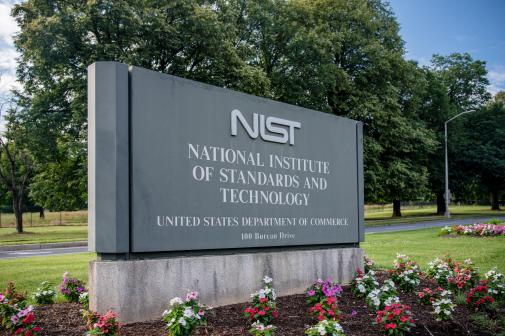Inside NATO’s take on the DOD’s West Coast trip
Defense organizations for NATO member countries worked together in meetings on the West Coast last week to tackle some of their common problems: using public cloud, speeding up acquisition, and developing a common identity and access management system.
The trip to Silicon Valley gave them time to talk with tech companies of varying size and maturity about developing a standard for identity management and authentication that transcends rapidly changing technology, Koen Gijsbers, general manager of the NATO Communications and Information Agency, told FedScoop of his time spent in America with U.S. Defense Department CIO Terry Halvorsen and his counterparts from several allied nations.
Gijsbers’ agency is in charge of acquiring and defending NATO IT and command, control, communications, computers, intelligence, surveillance and reconnaissance, otherwise known as C4ISR. NATO serves as an intermediary to develop standards with member nations, and NCI (Gijsber’s agency) develops the technical solutions for those standards, he noted.
A future goal, Gijsbers said, is to develop a standard for member nations on multilevel authentication.
“That we need multilevel authentication is clear,” Gijsbers said. “What exactly it will be is something that needs to be developed further and evaluated.”
Gijsbers said he is still not sure what the “right mix” of authentication will include. But in addition to discussing the possible solution, he said they also discussed with the companies how to develop the agreement.
“The question is how do you make those agreements relevant given the quickly evolving technology?” Gijsbers said. “Because to get an agreement on the standard might take years.”
On the trip were CIOs or deputy CIOs from Australia, Canada, Germany, Japan, New Zealand and the United Kingdom, Halvorsen told reporters before departing on the trip. Halvorsen has made the trip before, but this was the first time these allies, including Gijsbers, joined him.
[Read More: Halvorsen makes Silicon Valley trip with NATO, allied CIOs]
Halvorsen said in a speech at an NDIA event Thursday that the group has acknowledged they need a common identity standard.
“Today to keep our edge we need to be able to more quickly share data… The first things you’ve got to have to do that is an identity standard we’re all agreeing to,” he said. “We’ve all agreed we’ve got to get to a common identity standard that not only ensures me that you are you, but ensures me that you being you have these accesses.”
Moving to a common identity management system will allow the nations to collaborate more easily, and securely, Gijsbers said.
“We all need to do that the same way so that we can talk to each other,” he said. “And that is actually a role that NATO also has, that we are working interoperability issues between nations.”
Speeding up acquisition in general was a larger theme during the trip, Gijsbers said.
“Besides getting, you know, new and innovative solutions, we are looking at: Can we speed up the acquisition process so we can implement those new ideas quickly?” he said.
The group met with the director of DOD’s Defense Innovation Unit Experimental on the trip. DIUx is a DOD initiative that seeks to speed up the implementation of emerging technology by engaging private tech firms. The team has offices in Silicon Valley and Boston, two of the nation’s major tech hubs.
And DOD Secretary Ash Carter announced this week that DIUx has a new method for piloting technology more quickly. Gijsbers said during the trip the group discussed the new method, and he thinks it is a good idea.
But before implementing something similar in NATO, he added that he plans to learn from the experience by letting it work and seeing if it is successful.
[Read more: Carter: DIUx armed with new method to develop tech faster]
The West Coat meetings also touched on how the allies could use the public cloud in defense.
“What I took away from it was that first of all, industry is recognizing the specific position that defense has, and you see some of the cloud providers willing to develop on-premise or specific clouds,” Gijsbers said.
He also said he thought company leaders expressed that they would be more open about the security of those clouds with potential government customers.
“I think we all have an agreement that we need to open up and look at the benefits of the public cloud for lower security domains,” Gijsbers said of his partners on the trip. “And the U.K. is doing that at the moment, is implementing a solution.”
The U.K. Ministry of Defence has decided to implement Microsoft Office 365, Gijsbers noted, and he said he thinks it will be a leader in this.
The benefit of multination and NATO collaboration is that everyone does not need to redundantly pilot the same solutions, Gijsbers said. They can learn from each other.
[Read more: Pentagon, allies working toward common IT systems]
“Not everything will be on the cloud,” Gijsbers cautioned. “We will need private, on-premise domains for higher security levels and politically sensitive information. That is important in the defense domain. But that hybrid solution, you know of private and public is — I think — the way to go. And I think we all recognized that in doing the tour.”
For Gijsbers, this trip was an addition to the others he makes in Europe to stay current with new technology.
“We very much have a responsibility in making sure that different capabilities of the nations can work together,” Gijsbers said of NATO. “And that’s why it’s very important to be part of the innovative activities, not only in the U.S., but also in Europe.”
Together, the group on the West Coast trip represented more than 50 billion euros of buying power, Gijsbers said.
“The fact that we were together… I think was also a good message to industry that we are very closely collaborating in order to get our capabilities aligned,” he said.
Billy Mitchell contributed to this report.






